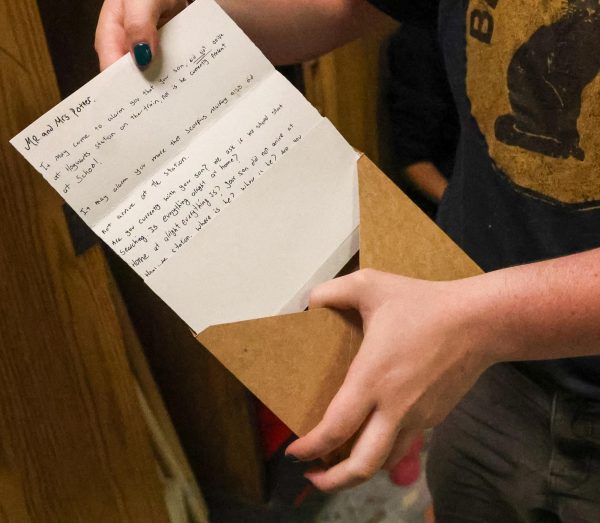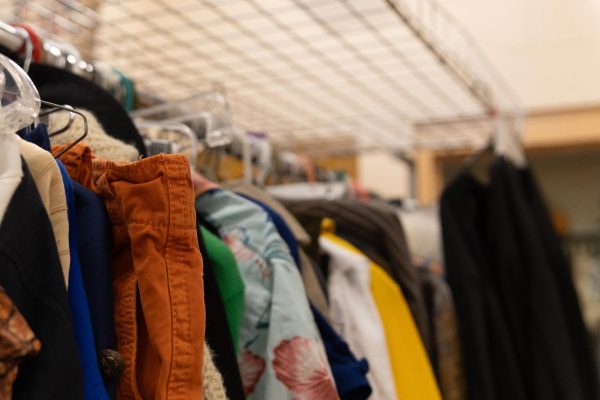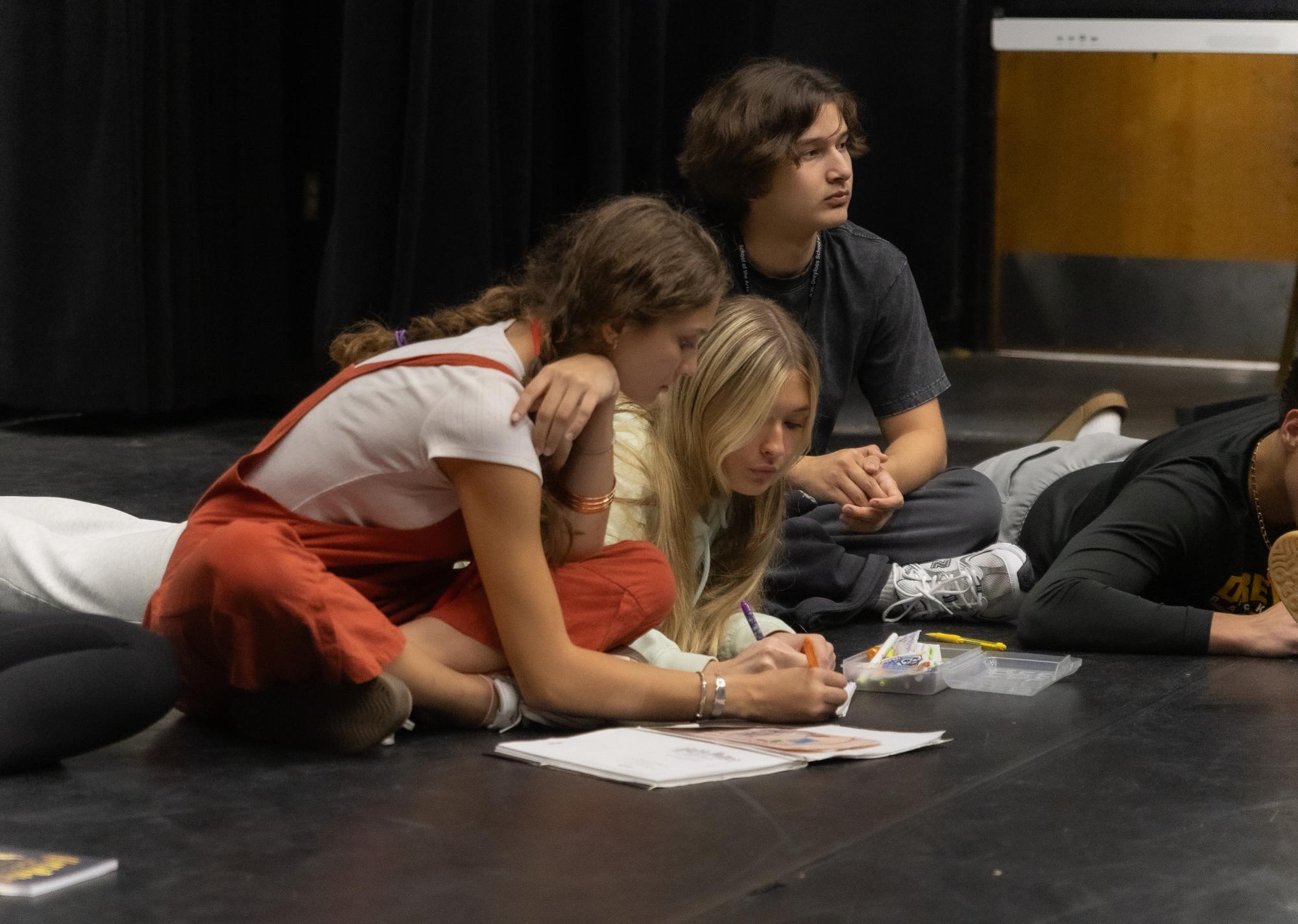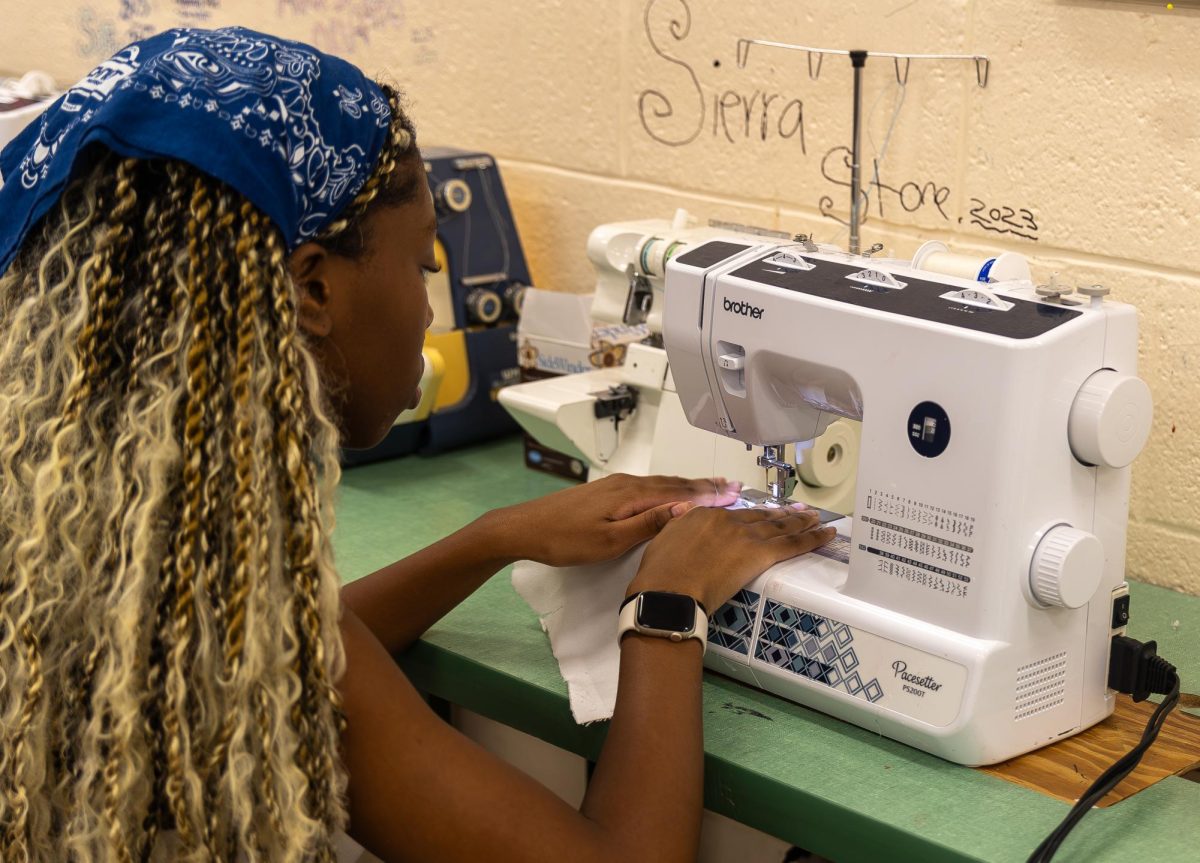As the lights dim and cast members take the stage for the first scene, audience members are transported into a world of magic, spells, and mystery. But what few people see is the extensive, coordinated, behind-the-scenes effort that is necessary to bring the Wizarding World of Harry Potter to life. From the hand-crafted props to the mechanics of levitating brooms, the crew of the theatre department’s fall play, “Harry Potter and the Cursed Child,” worked for months to create a universe that both attempts to honor the Broadway production and add a Dreyfoos spin.
Twisting Time and Shifting Worlds: Set Design
The build crew carries out their work in the “shop,” a large room with the tools and wood necessary to construct the set pieces for this production. The crew holds afterschool meetings multiple times a week from 4 to 6 p.m. During these meetings, music from the late 20th century and the aroma of freshly shaved wood permeate the room as technical theatre teacher, Nathaniel Rayman, delegates tasks to specific students and works with them individually when they use sharp tools, most frequently saws.
With over two dozen scene changes, battles, and time travel sequences, the set for “Harry Potter and the Cursed Child” is “demanding,” according to Mr. Rayman, who has overseen the build crew for more than 15 productions at Dreyfoos. He said the key to building the sets for this play was practical innovation, specifically constructing detailed sets that were also simple enough to be moved in mere seconds during the show.
“In this production, we’re in a forest one minute and the Ministry of Magic in the next,” Mr. Rayman said. “We had to be both very creative and realistic in how we went about going to these different locations in a very short period of time.”
The build crew and Mr. Rayman, along with all other technical crews and the show’s directors, made it a point not to draw too much inspiration from the original Broadway production.
“Our job as artists is not to copy somebody else,” he said. “I haven’t even watched the Broadway version. I want my ideas to come straight from the script.”
He said that while much of the large-scale construction is handled by him, the set design is still largely student-led.
For theatre sophomore Amerie Albury, working on the build crew is not just about construction and set design; it is about collaboration and problem-solving under pressure.
“People think tech is just hammering wood together, but it’s so much more than that,” Albury said. “It’s math, measuring, and knowing your tools. You really have to be ready to think on your feet. But when we see it (the set) onstage and everything, the lights, the set, the movement, meshes together seamlessly, it feels like all the chaos and stress was worth it.”
Crafting Illusions: Prop Creation
The smell of fresh paint and the sound of laughter filled the air as crew members, positioned throughout the work area, lay on the floor mixing paint colors or sifted through props from previous productions, scouring for inspiration. The props crew, led by theatre teacher Hannah Sherrod and technical theatre senior Nikolai Gerrard, is stationed in a small room adjacent to the build crew’s shop.
The crew is tasked with crafting anything from minuscule hand-held items to large-scale illusions. For example, potions for the show were made from donated perfume bottles, oil, glitter, and eyeshadow. The results were glimmering concoctions labeled “Salamander Blood,” “Love Potion,” and “Liquid Luck.” Additionally, the crew created levitating brooms and bookcase puppets, which were designed to move on cue, as well as dementor figures, requiring puppetry and mechanical rigging.
“A lot of it is smoke and mirrors,” Gerrard said. “We’re creating technical elements that the audience won’t notice, but they take a lot of knowledge to pull off. They’re not just props, they’re storytelling devices. Even though some of them are very challenging to make, they challenge us in the best way possible.”
Gerrard, who has worked on the technical side of productions for four years, said that collaboration is key when working behind the scenes for any production, especially one as technically demanding as “Harry Potter and the Cursed Child.” She said that the people in charge of each of the crews (props, build, lighting, etc.) meet weekly on Wednesdays to discuss their desires and plans for the show.
“Lighting, sound, props, set decoration: it all has to sync,” she said. “We meet weekly and share our goals. This is important because if something goes wrong in one department, it affects all of us.”
Some props are taken home after the show wraps up, while most will be kept in storage rooms, potentially to be repurposed or used as inspiration for future productions. For this play, the prop crew decided to address each of the Hogwarts admission letters to a faculty member, especially those who worked directly on the show. The letters, which were sealed with hot glue and wax to imitate the red emblems from the original Harry Potter film franchise, will be delivered to their respective faculty members after the conclusion of the show.
“We figured this was a fun and easy way to show our appreciation for so many of the staff members whose hard work is needed to keep the theatre department running,” Gerrard said. “Some are addressed to teachers, while others are made out to administrators and other staff members whose work is often overlooked.”

(Malina Asnani)
Creating Identity: Costuming
Boxes overflowing with fabrics, the smell of a hot iron flattening polyester, and the soft chattering of sewing machines are indicative of the costume room. The costume crew meets twice a week on Tuesdays and Thursdays after school to source, sew, and alter pieces for the show. For first-time crew member theatre sophomore Bella Catania, the job, while heavily centered around aesthetics, is about storytelling at its core.
“Bad costumes take you out of the experience,” Catania said. “Good costumes should blend in so well that you don’t even notice them; they just feel right.”
From lengthy Hogwarts robes to accessories, the team’s job is to ensure each character’s outfit aligns with the script without pulling focus from the onstage action.
“If something looks out of place or cheaply done, it pulls the audience out of the story,” she said. “That’s the last thing we want.”
While some roles, such as the ensemble, require minimal styling, the costumes of other characters require more detail. All outfits must be flexible enough to survive choreography, quick changes, and lighting cues.
“There are effects happening in this show that we’ve never had to think about with costumes before,” Catania said. “We have to make sure every fabric works with lighting, won’t tear during movement, and still feels magical.”
Catania was a part of the cast of “The Drowsy Chaperone” last fall. She said she has quickly learned that technical work is just as demanding and rewarding as being onstage.
“It’s easy to overlook crew work when you’re in the spotlight,” she said. “But being a part of the magic that brings everything together is honestly just as powerful.”

Holding The Threads Together: Stage Management
Overseeing each aspect of the production is the stage manager, theatre senior Sherry Wiedrich. She is responsible for coordinating between cast, crew, and staff members. From scheduling rehearsals to leading production meetings, her job is to keep the entire production on its feet.
“I’m kind of the liaison between everyone,” Wiedrich said. “From the directors to the crew heads, or from lights to sound, I’m the one connecting the dots.”
She said that the practical effects and moving set pieces made the latter end of the rehearsal process “challenging.” In the early weeks of the process, crafting the rehearsal schedule proved taxing for Wiedrich because of its “ensemble-heavy” nature.
“My biggest goal always is to stay calm and find the root of the problem,” Wiedrich said. “If something goes wrong, nobody likes it when you yell or point fingers. You have to stay collected and ask: What’s the issue and how can we fix it?”
Wiedrich has experience in stage management, as she was an assistant stage manager for two prior productions: “Twelfth Night” and “Metamorphoses.” But working on a production this elaborate, she said, brings a unique kind of satisfaction.
“Seeing the magic come together is the most rewarding part,” she said. “You start with a script and an empty stage, and then suddenly you’re watching these amazing moments unfold. It’s a great reminder of why we do this in the first place.”
The Bigger Picture
From shimmering potions to covert set mechanisms, each technical department worked for months to bring the magic of the wizarding world to life. Gerrard said that in the future, she hopes that students will pay more attention to the technical theatre department.
“Tech is such an important part of theatre,” she said. “I’ve spent the last two of my birthdays here. It’s exhausting sometimes, but the final product makes it all worth it.”
Though they did not take a bow when the show finished, the crew’s impact on “Harry Potter and the Cursed Child” was imprinted on every spell, staircase, and swirling potion on stage.
“We’re not just making things, we’re making magic,” Gerrard said. “You won’t see our names on the marquee, but you’ll see our work in every scene.”





